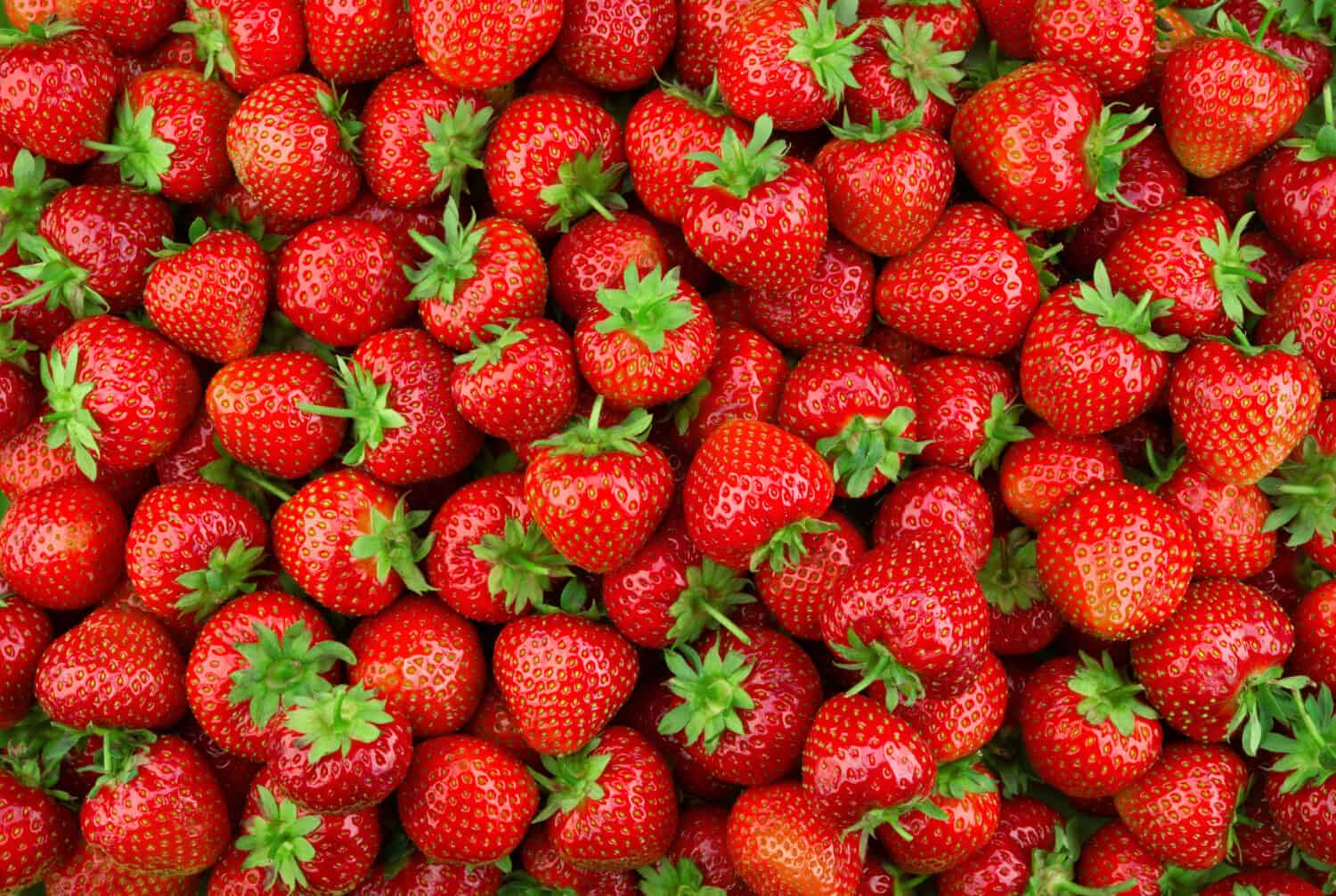One of the best parts of summer is fresh, ripe fruit, like strawberries. So, many of us choose to add this plant to our garden in the hopes of getting a bountiful harvest. Unfortunately, sometimes strawberry plants don’t produce any fruit. While that can get frustrating, an important factor usually causes the lack of berries. We want to help you have a bumper crop next year. So below, you will find the thirteen most likely reasons your strawberries didn’t grow this year.
1. Choosing the Wrong Variety
Unfortunately, not all strawberry plants are created equal. There are over 100 strawberry species and roughly 500 cultivars. But even though there are over 600 varieties to choose from, not all grow equally well in every climate. Most cultivars were bred to thrive in specific growing conditions. So, what works in Massachusetts won’t necessarily work in New Mexico. That unique variety you found online may be eye-catching. However, if you plant it in your garden to no avail, it may be ill-suited for your climate. The best way to find which strawberries grow in your region is to contact your local extension office or speak to a nursery. They will help you select one that will produce fruit!

Even though there are over 600 varieties to choose from, not all grow equally well in every climate: they thrive in specific growing conditions.
©V_Sot_Visual_Content/Shutterstock.com
2. Location
Some plants grow well anywhere you plant them. Strawberries are not one of those. They require certain growing conditions to thrive and produce fruit. You can grow this tasty fruit in a raised bed or container with high-quality and nutrient-rich soil. Additionally, they require at least six hours of direct sunlight daily, preferably more. If you plant them in an area with too much shade or poor-quality soil, there will be little to no fruit production.
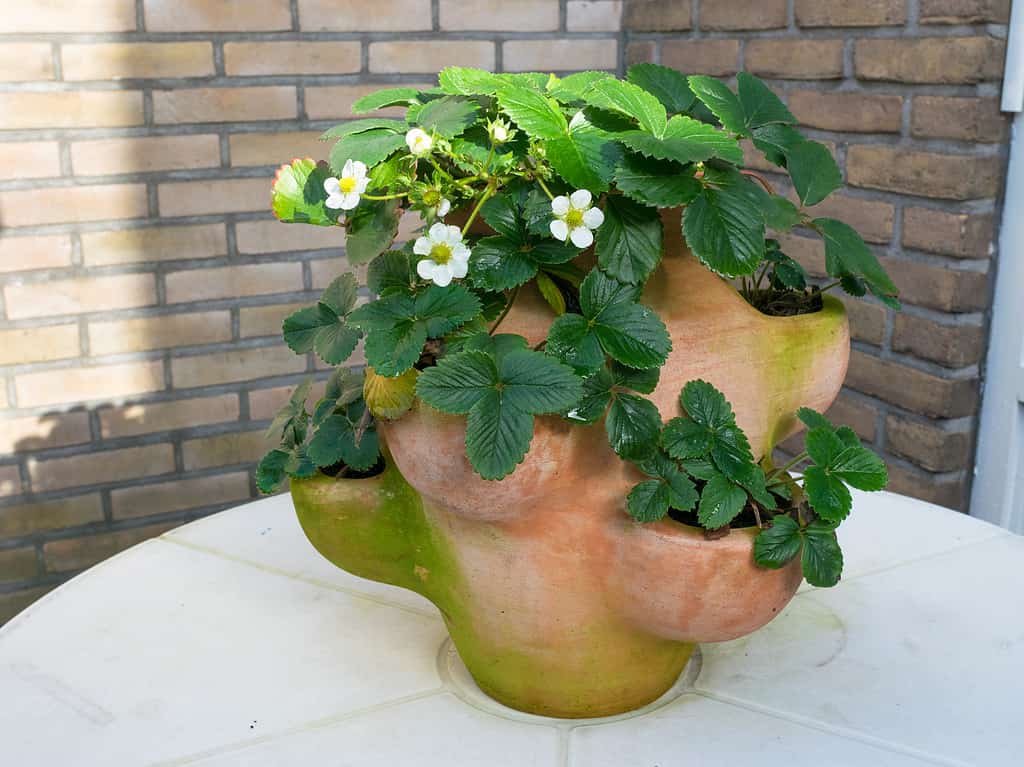
Strawberries require certain growing conditions to thrive and produce fruit.
©Menno van der Haven/Shutterstock.com
3. Poor Companion Planting
Usually, conversations around companion planting entail pairing plants together to optimize growth. But there is another side to companion planting. Sometimes, some plant pairs can stunt each other’s growth. Nightshades like eggplant, tomatoes, peppers, and potatoes are poor companion plants for strawberries. Additionally, avoid planting mint, melon, roses, or okra in the same bed as your strawberry plants.
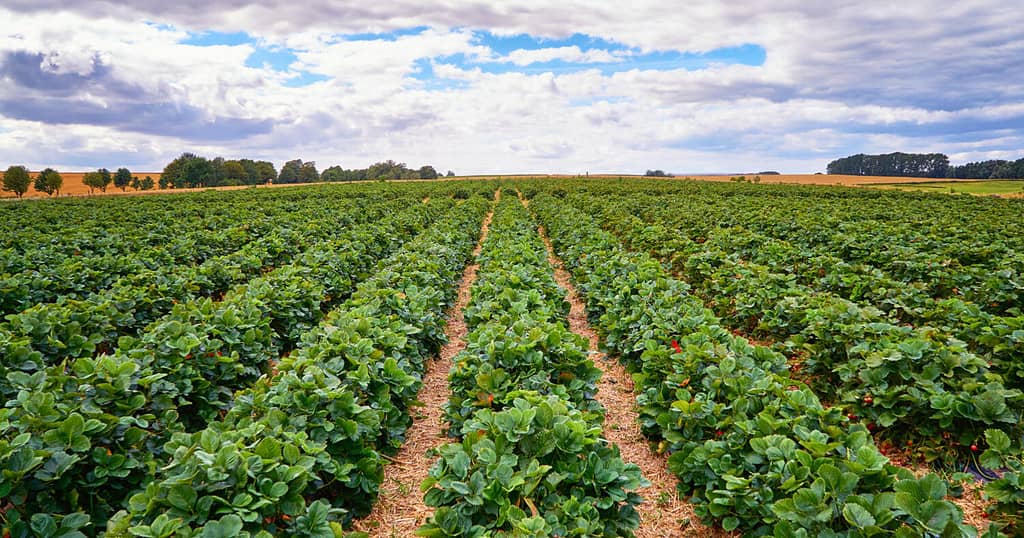
Sometimes, some plant pairs can stunt each other’s growth.
©DR pics/Shutterstock.com
4. Soil Issues
Strawberries like well-draining soil rich in organic matter. They also prefer soil with a more neutral pH. If you are concerned about the quality of your soil, consider getting it tested before the start of the next growing season. Most extension offices offer this service. The results will tell you what specific amendments are needed (if any).
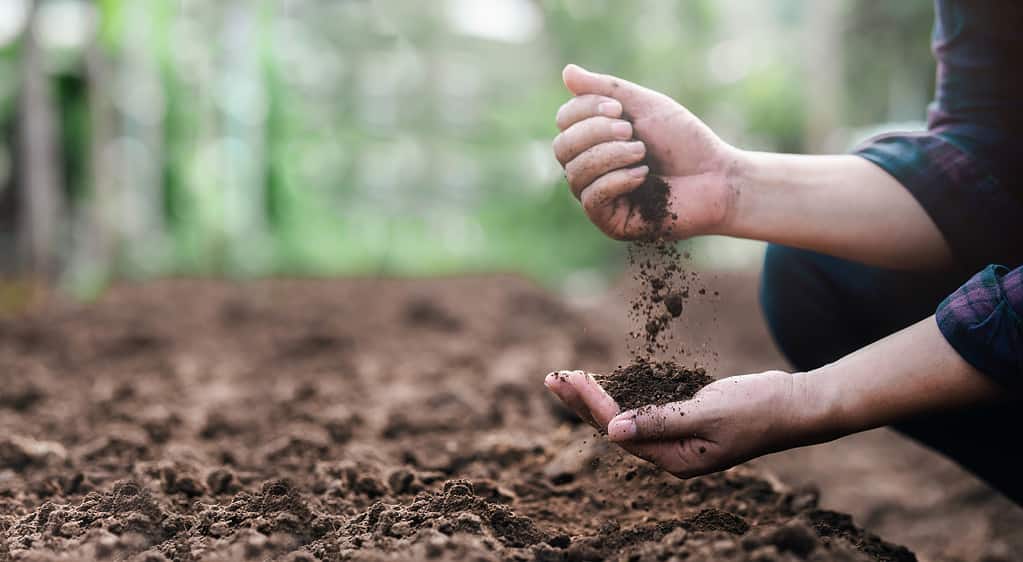
Strawberry plants require high-quality, nutrient-rich soil.
©Sakorn Sukkasemsakorn/iStock via Getty Images
5. Transplant Shock
Most of us buy strawberry starts from the store to get a jump on harvest season. They are typically kept in a slightly shaded spot or indoors and protected from the elements. If you don’t harden them off properly before transplanting them, they experience transplant shock. The best-case scenario is that the strawberry takes a long time to recover and produces little or no fruit. And the worst-case scenario is that you kill the plant completely.
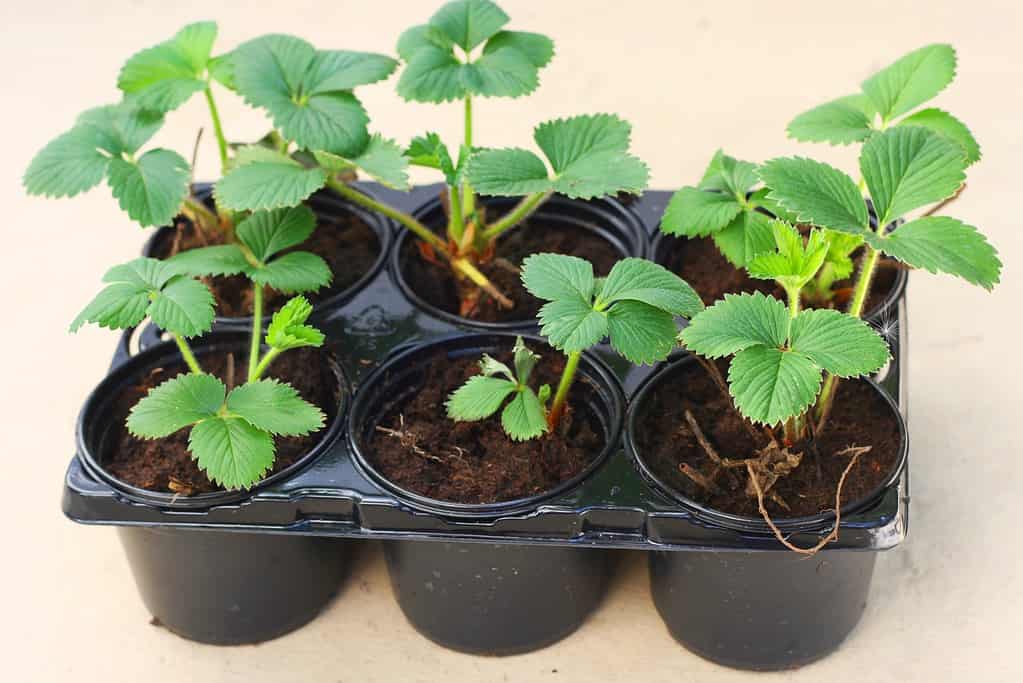
If you don’t harden strawberry plants off properly before transplanting them, they experience transplant shock.
©padu_foto/Shutterstock.com
6. Improper Watering
Unlike many plants in your garden, strawberries have shallow root systems. So, that deep watering you do once or twice a week may not be enough. Since the roots sit shallowly in the soil, they pull water in from only the top few inches rather than deeper down. During hotter times of the year, those areas dry out the quickest. Watering more frequently during heat spells may help your plants produce abundant fruit.
But don’t try and overcompensate by watering too much. When strawberry plants sit in excessively wet conditions for long periods of time, their roots will get damaged. At first, this will result in little to no fruit. After a while, soggy soil may kill your plant.
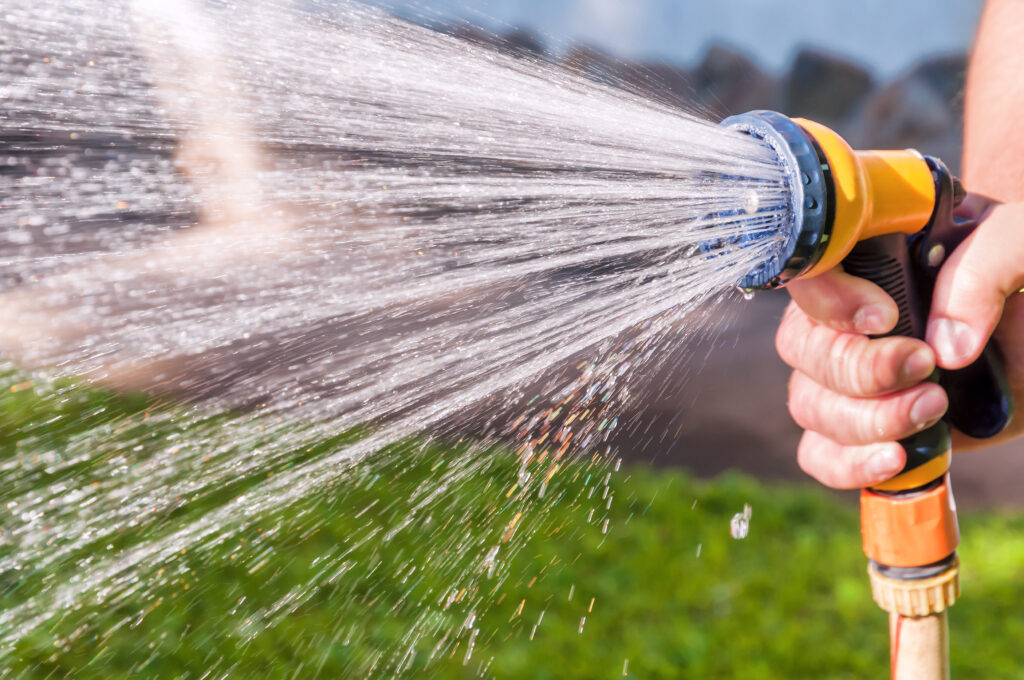
Strawberry plants require consistent watering but will suffer if the the soil is waterlogged.
©iStock.com/vovashevchuk
7. Planting Too Deeply
Since strawberry plants have shallow roots, they will suffer when planted too deeply. New shoots and strawberries develop from the crown. So, if you bury the crow too deeply in the soil during transplant, it cannot grow easily. Additionally, when planting depth isn’t considered, the crown can get exposed to excessive moisture and rot like roots do. Only place the crown roughly an inch deep to ensure a proper harvest and the best growth.
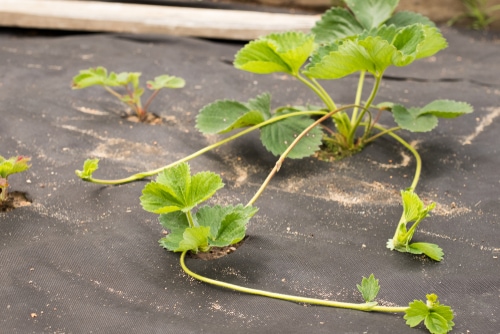
Planting your strawberry plants at the appropriate depth will ensure the runners have plenty of room to grow.
©Elena Masiutkina/Shutterstock.com
8. Failure to Pinch of Early Flowers
It is exciting when those first strawberry flowers arrive! After all, they signify the start of berry season. However, if the plant is not very large when those first blossoms arrive, it could spell trouble. Leaving the flowers on, as tempting as it may be, will signal to the plant that it is time to stop growing. And when you have smaller strawberry plants, the harvest will be drastically reduced. So pinch off the first few flowers to ensure your favorite fruit has enough space to grow.
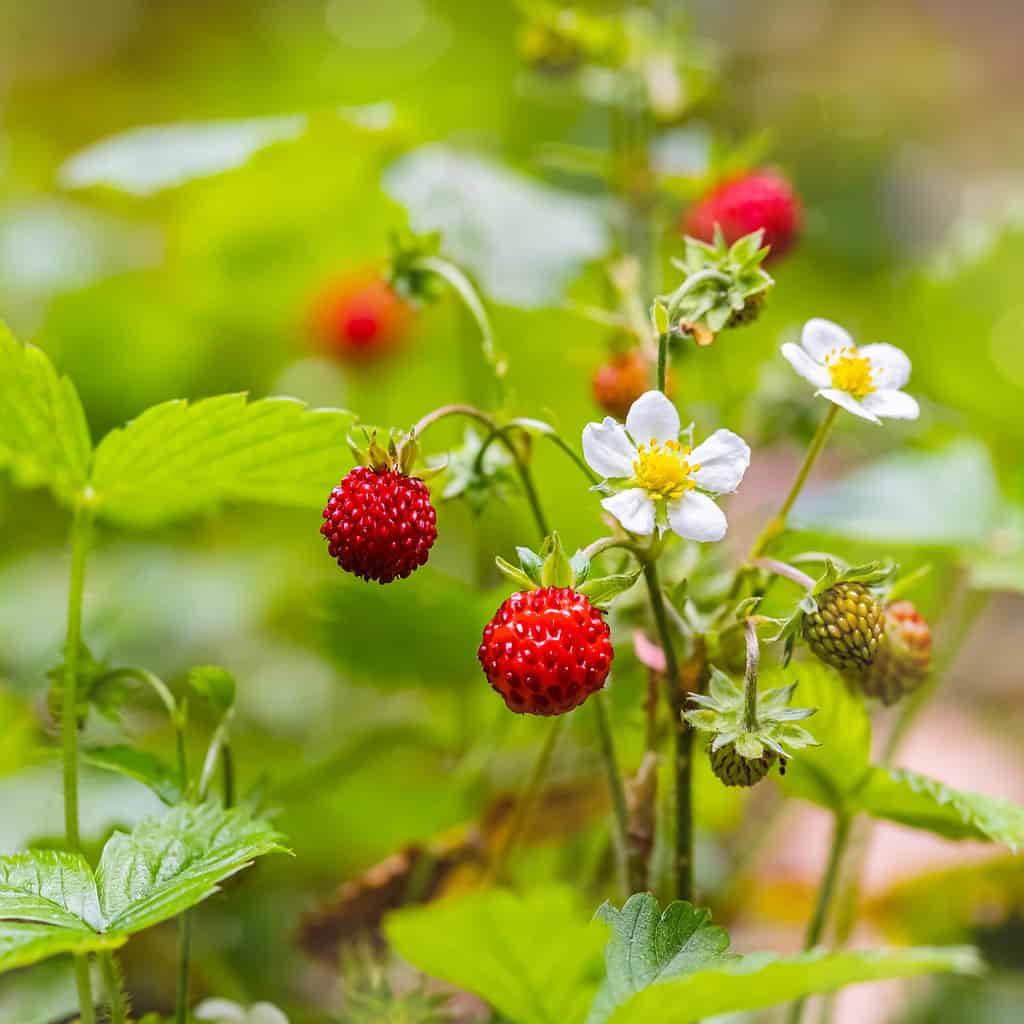
Pinch off the first few flowers to ensure your favorite fruit has enough space to grow.
©nnattalli/Shutterstock.com
9. Pest Pressure
Strawberry plants are not immune to pest pressure, unfortunately. Several may set their eyes on your tasty fruit, including spittlebugs, slugs, strawberry bud weevils, and strawberry sap bugs. Watch your plants closely for signs of insect infestation. You can remove the larger pests easily by picking them off and dropping them in soapy water to kill them. Then, consider spraying insecticidal soap or neem oil on your plants to kill larvae and prevent future issues.
The other thing to consider is that, though they are not pests, small mammals and birds may be picking off your strawberries before you even know they are there. That will make it appear like your plant is not producing fruit. If you suspect you may have this issue, add some netting over the top of your plants to protect them.

Watch your plants closely for signs of insect infestation.
©Dawn Balaban/Shutterstock.com
10. Disease Pressure
One of the most common diseases that impacts strawberry plants is root rot. They develop this problem when the soil they get planted in (ground or container) is too consistently moist. Let the top inch of soil dry out before watering to help prevent this.
Powdery mildew and fusarium wilt are other diseases that may strike your plants. One of the ways you can try to avoid these in the first place is to bottom water first thing in the morning. Doing so will help prevent the leaves from getting too et, or splashback from the soil, potentially infecting the plant. But if you notice signs of either issue, promptly cut off the diseased portion. Quick action may help prevent further spread.
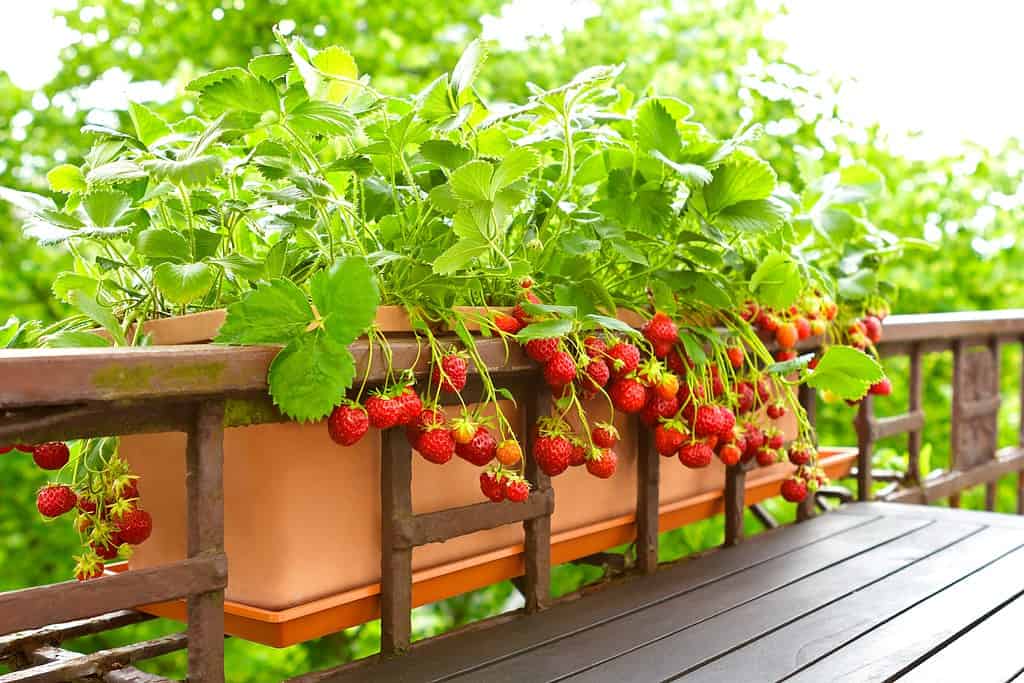
Diseases can strike strawberries just like they do with any other plant. Keep a close eye on your plants to stop any disease in their tracks.
©Agenturfotografin/Shutterstock.com
11. Too Much Fertilizer
Most online gardening advice tells new gardeners to add fertilizer. While this isn’t a bad thing, too much fertilizer or the wrong kind of fertilizer will harm your plants rather than help them. As long as you amend your soil with plenty of organic matter before planting season, you can go a little easier on the fertilizer during the growing season. When you add fertilizer, look for one with a lighter nitrogen ratio. Too much nitrogen in the soil will encourage strawberry plants to put extra energy into the foliage, leaving little energy to produce flowers and fruit.
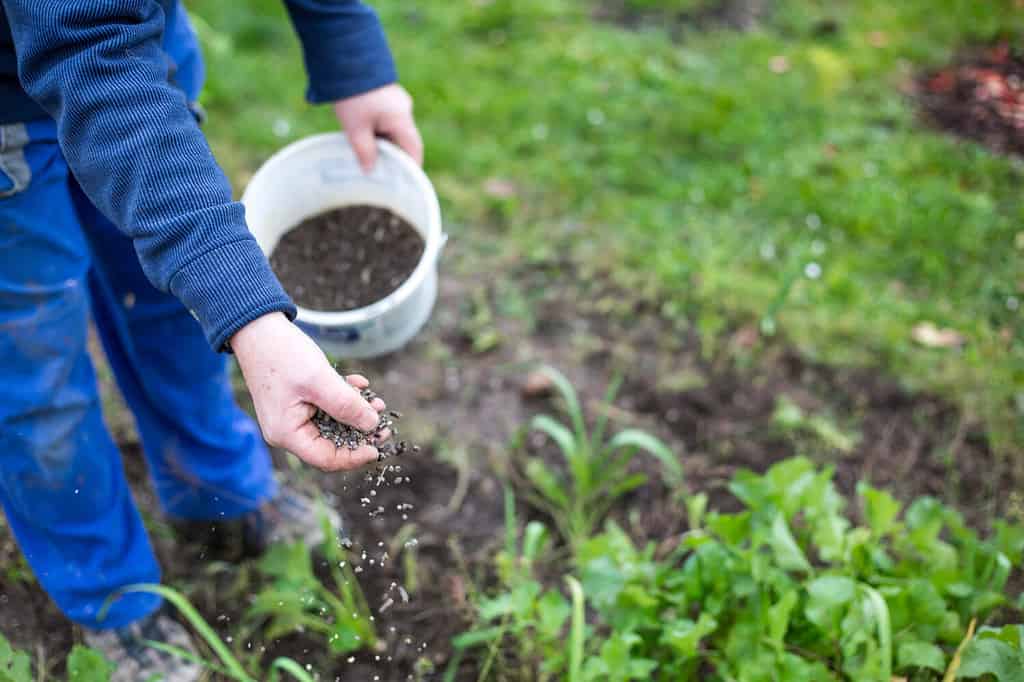
When you add fertilizer, look for one with a lighter nitrogen ratio.
©Simon Kadula/Shutterstock.com
12. Temperature
One of the reasons strawberries struggle, even in their peak season, is because the temperature is wrong. They require warmer (but not hot) days and slightly cooler nights to produce fruit. When the daytime temperatures rise too much, the plants will struggle and won’t develop the necessary blossoms. However, the opposite problem is also true. If the weather gets too cold, the flowers may drop off or get damaged. Finding that sweet spot for strawberry harvests can be challenging. The best bet is to watch your weather closely and provide adequate protection against excess cold or heat.

Strawberries don’t do well when it is too hot or too cold out.
©Ed Connor/Shutterstock.com
13. Plant’s Age
Most berries take at least a season to get established, and strawberries are no exception. Young strawberry plants are primarily focused on developing during the first year or two of their lives. So, you will likely get little fruit during this window. If you have troubleshot every other possible issue, it could be that your strawberry plant is young. You will likely get a bumper crop the following year if you have taken proper care of your plant!
| Number | Problem |
|---|---|
| 1 | Choosing the Wrong Variety |
| 2 | Location |
| 3 | Poor Companion Planting |
| 4 | Soil Issues |
| 5 | Transplant Shock |
| 6 | Improper Watering |
| 7 | Planting Too Deeply |
| 8 | Failure to Pinch Off Early Flowers |
| 9 | Pest Pressure |
| 10 | Disease Pressure |
| 11 | Too Much Fertilizer |
| 12 | Temperature |
| 13 | Plant’s Age |
Thank you for reading! Have some feedback for us? Contact the AZ Animals editorial team.

